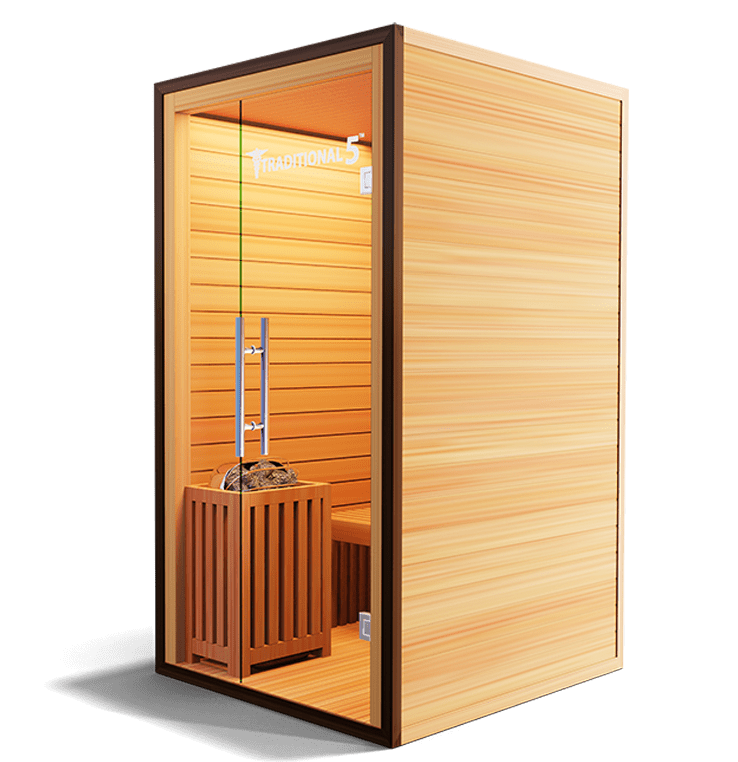The Best Guide To Traditional Sauna
The Best Guide To Traditional Sauna
Blog Article
About Traditional Sauna
Table of ContentsIndicators on Traditional Sauna You Should KnowExcitement About Traditional SaunaNot known Incorrect Statements About Traditional Sauna Getting The Traditional Sauna To WorkTraditional Sauna Things To Know Before You Buy
A lot of the weight shed in a sauna is water loss and is re-gained upon rehydrating. Nevertheless, undoubtedly sauna can be an important part of a healthy weight loss program. To check out the distinctions in between typical and IR saunas, I will certainly divide these right into proven, theoretical, and produced differences.Thus, the hottest point in the saunawhich is at the ceiling directly above the sauna heateris normally in between 185 and 190 F. Claims that a typical sauna goes beyond 200 F is merely not real and not applicable for electrical saunas marketed in the United States. The temperature level for a far-infrared sauna is normally set between 120 and 140 F; however, unlike the typical sauna, the objective in and IR space is not to accomplish a heat.

When a traditional sauna has actually been appropriately heated, the sauna wall surfaces are warm, the air temperature level has attained set temperature level and the rocks are very warmed. As a fascinating side note, the warmed walls and the rocks are giving off far-infrared warmth, integrated with the warmed air, to produce an "wrapping up warmth".
Everything about Traditional Sauna
When the high temperature is accomplished, the components cycle on and off to maintain the heat. The majority of traditional sauna individuals appreciate putting water over the rocks to create heavy steam to increase sauna moisture degrees. The advantages of pouring water over the rocks include: making the room a lot more comfy, dampening the nasal flows, and allowing the use of aromatherapy by mixing vital oils with the water.

When the energy goes into the body, it causes the body temperature to increase and ultimately causes sweat. In an infrared sauna it is essential for the emitters/heaters to stay on practically continuously. Because there official source is no mass of rocks to keep heat, the sauna will certainly cool down if the emitters shut off.
5 Simple Techniques For Traditional Sauna
As discussed over, the sauna bather in an infrared space wishes to place himself in front of running emitters to get optimal take advantage of the warmth. The heating time for both rooms can be really different, relying on exactly how the areas are utilized. For a traditional sauna, a bather must allow 30-40 minutes for the room to attain a wanted temperature and to effectively pre-heat the rocks.

A well created sauna will typically accomplish a temperature of 150-160 F in regarding 30-40 mins. For hotter temperature levels, the area might need to heat for a longer period.
To some, 15 minutes was "squandered" while the infrared energy heated up the timber panels instead of warming a body, while others locate a pre-heated area to be more comfortable and believe a raised beginning temperature level is necessary to begin sweating. The size of advised usage for each and every area click this link is about the very same (10-15 minutes per session); nevertheless, because of the lower air temperatures and the ability to feel the effects of infrared heat faster than a conventional sauna, it is not uncommon for a person to spend a total amount of 20-30 mins in an infrared sauna.
How Traditional Sauna can Save You Time, Stress, and Money.

The ordinary cost per kWH of electrical energy in the U.S. is roughly $0.11, so a 4.5 kW heating system will set you check out here back approximately $.50 to run for one hour, if the heating unit runs continually for one hour. Generally a sauna heating unit will certainly run for 75% of the very first hour and 50% of succeeding hours on given that the elements cycle once the set temperature level is attained.
A 2 person far-infrared room is typically literally smaller sized than a traditional sauna, typically regarding 4' x 4' or smaller sized. The IR home heating system is typically 1.5-1.7 kW utilizing a 120 volt 15 amp plug-in service. Considering that the area can be made use of sooner than a sauna room, we will assume the room is used for to of an hour including warm up time.
There is a rarely gone over distinction in the social experience between the two spaces. While our culture has lost some of the social advantage of the traditional sauna experience, it can be very socially rewarding (Traditional Sauna). From family time in the sauna, to heart-felt discussions with substantial others, to sauna partiesthe typical sauna experience can bring about intimate mingling
Examine This Report about Traditional Sauna
Most higher end infrared areas include tinted light therapy, noise systems and full-glass fronts.
Report this page